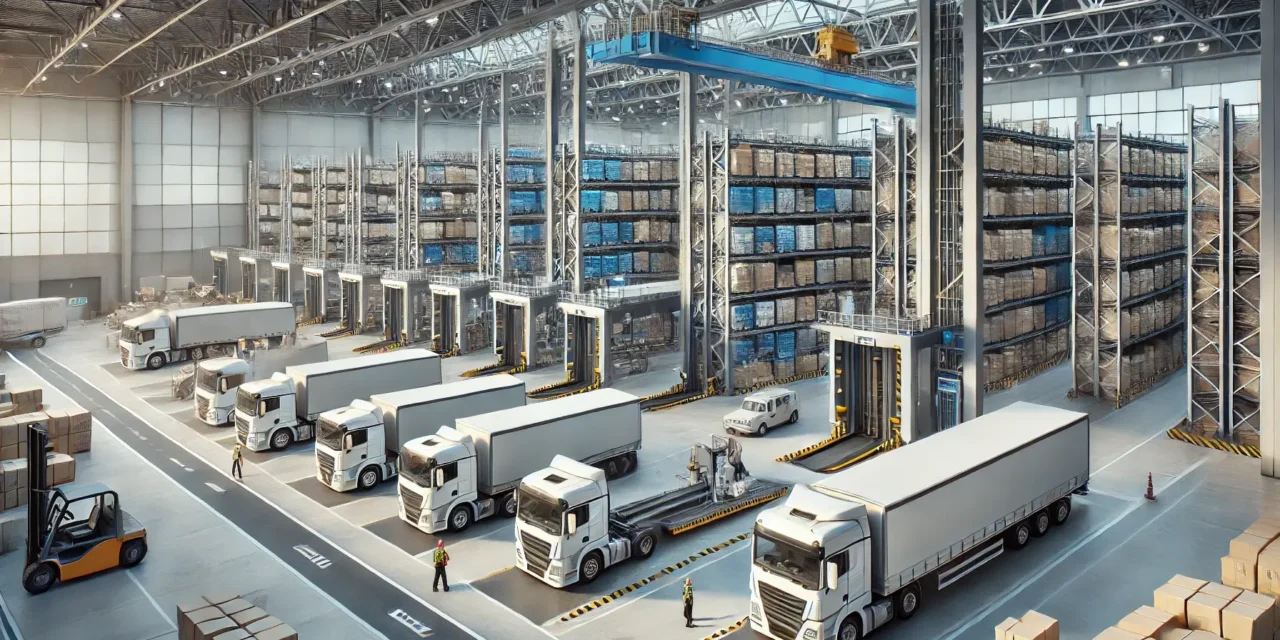Logistics Procurement in Blue Yonder TMS: The smarter way to buy freight
In this article we will talk about one hidden gem tools in the TMS solution: Blue Yonder’s Logistics Procurement module.
Most large companies rely on traditional procurement systems (SAP Ariba, Coupa or manually execution of procurement processes) to handle freight contracts, but here’s the catch:
Freight negotiations make the most sense when they’re connected to your Transportation Management System (TMS).
Why? Because unlike generic procurement software, Blue Yonder’s TMS Procurement module is built specifically for transportation. It uses real TMS data—historical freight spend, carrier performance, lane volatility—to secure better contracts. Even better, once deals are signed, those rates automatically sync with your TMS, so planners and operators don’t waste time manually keying in (or chasing down) contracted rates.
The result? Fewer spreadsheets, fewer headaches, and actual cost savings (not just paperwork).
Yet, surprisingly, few companies use it. Some don’t even know it exists.
In this article, we’ll break down:
- How it works.
- Why it beats generic procurement tools for freight.
- When and how to implement it for maximum ROI.

What is Logistics Procurement module?
As you probably know, Logistics procurement refers to the process of sourcing, negotiating and contracting transportation services (e.g., full truckload, LTL, ocean, rail, aircargo) at optimal costs and service levels.
But unlike traditional procurement, modern solutions like Blue Yonder TMS use AI-driven analytics and automation to:
- Compare contract rates vs. spot market prices.
- Evaluate real data carrier performance (on-time delivery, claims ratio, priorities).
- Ensure compliance with pre-negotiated agreements.
Key Benefits of Logistics Procurement connected to Blue Yonder TMS
Connecting the Logistics Procurement module to your BY TMS delivers key benefits:
- Data-Driven Decisions – Leverage historical data and business trends to negotiate smarter contracts.
- Cost Savings – Reduce freight spend by 10–20% through competitive bidding and dynamic rate benchmarking.
- Efficiency Gains – Automate manual tasks like RFQ distribution, bid collection, and carrier onboarding.
- Risk Mitigation – Diversify carrier networks to avoid over-reliance on a single provider.
Core Features & Capabilities
The Logistics procurement module delivers powerful core capabilities designed to optimize efficiency, reduce costs, and enhance visibility across your supply chain:
- Bid Optimization Engine
- Uses AI-powered analytics to recommend the best carrier bids based on cost, transit time, and service quality.
- Supports multi-round bidding for complex logistics scenarios.
- Transportation Management System Integration
- Seamlessly connects with Blue Yonder’s TMS for end-to-end procurement-to-execution visibility.
- Automatically applies contracted rates during load tendering and planning.
- Mass Data Uploads
- Bulk import/export of carrier rates, contracts, and lane assignments via Excel or APIs.
- Reduces manual entry errors and accelerates procurement cycles.
- Automated Activity
- Auto-generates RFQs, evaluates bids, and awards contracts based on predefined business rules.
- Alerts users for exception management (e.g., bid outliers).
- Carrier Questionnaire
- Standardizes carrier onboarding with digital assessments (safety ratings, insurance compliance).
- Centralizes carrier profiles for easy reference.
- Single Unified Platform
- Combines procurement, planning, and execution in one interface—eliminating silos between teams.

How It Integrates with Other Blue Yonder TMS Modules
- Transportation Planner
- Procurement data (contracted rates, carrier capacity) feeds into planning algorithms to optimize mode selection and lane assignments.
- Ensures planners use the most cost-effective carriers without manual checks.
- Transportation Execution
- During execution, the system auto-tenders loads to pre-approved carriers based on procurement contracts.
- Real-time tracking updates procurement teams on carrier performance (e.g., on-time pickup/delivery).
When Is the Right Time to Implement Logistics Procurement?
Blue Yonder’s Logistics Procurement module delivers the most value after TMS rollout, once you have:
✅ 3–6 months of historical freight data (to benchmark rates and carrier performance).
✅ Established baseline transportation workflows (for smooth integration with planning/execution).
✅ A defined procurement strategy (e.g., annual RFQs vs. dynamic spot buying).
Early adoption risks: Without sufficient data, AI-driven bid optimization and carrier scoring may lack accuracy.
Conclusions
Blue Yonder TMS Logistics Procurement module transforms freight sourcing from a reactive, spreadsheet-heavy process into a strategic, AI-powered function. By integrating with planning and execution, it ensures cost savings and carrier performance are baked into every supply chain decision.
CONTACT BLUEGISTICS
Inicie la evolución digital de su cadena de suministro con la ayuda de nuestro equipo de especialistas y consultores acreditados. Le acompañaremos desde la selección y el análisis de la solución hasta su implantación, gestión tecnológica y asistencia.
English
- DÍGANOS QUÉ NECESITA
- NOS PONEMOS EN CONTACTO
- REALIZAMOS UN ESTUDIO PERSONALIZADO




